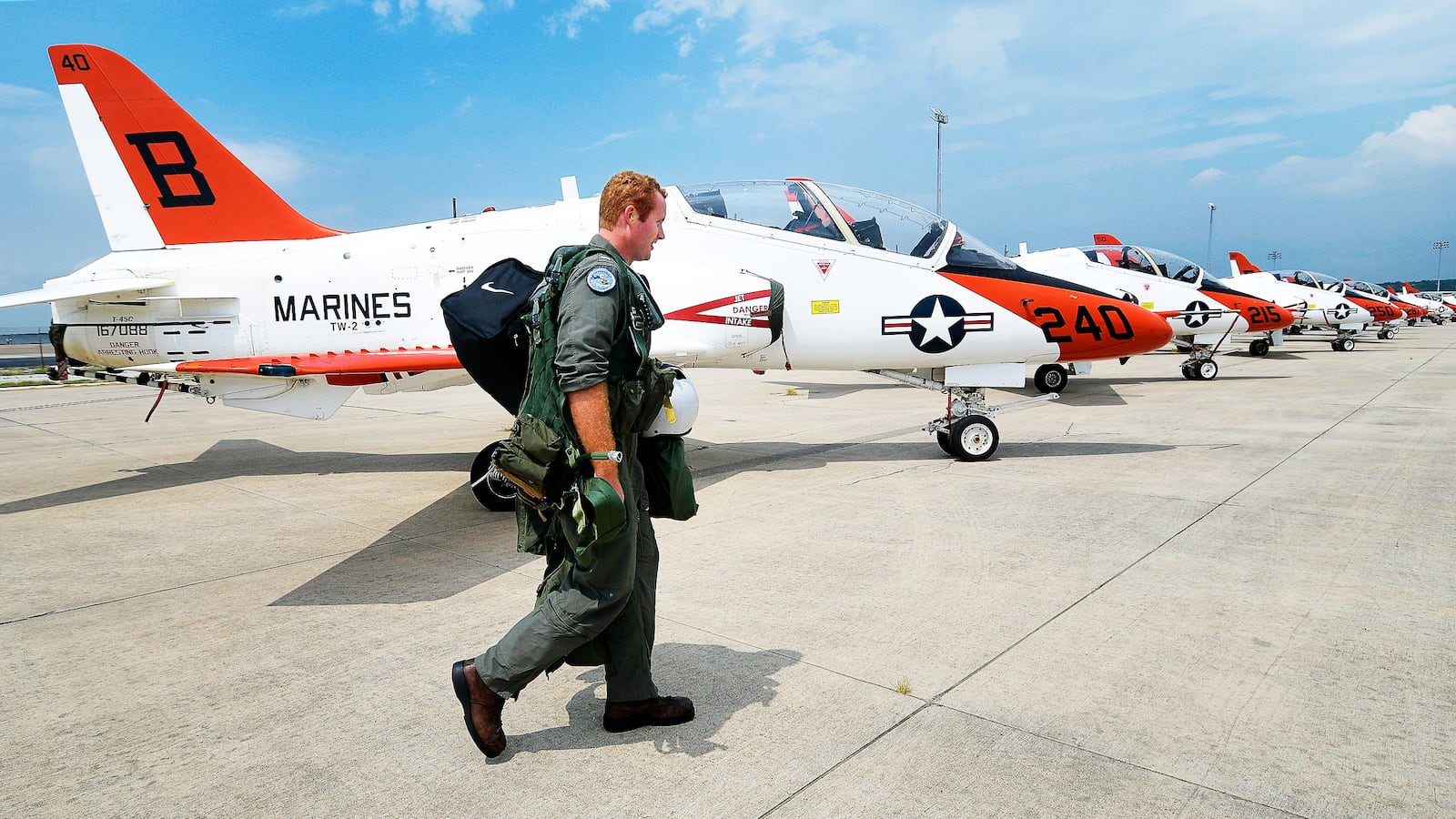PARKLAND, Florida—As millions of Americans flee the path of Hurricane Irma, several thousand are headed for it: Marines.
Defense Secretary James Mattis on Wednesday authorized four U.S. Navy ships and Marines to redeploy from recovery efforts for Hurricane Harvey in Texas and sail to the Florida peninsula.
The main support force is the 26th Marine Expeditionary Unit (MEU), based out of Camp Lejeune, North Carolina. The 26th MEU is made up of approximately 2,200 Marines, under the command of a Marine colonel, with rotary-wing aircraft assets, like the MV-22 Osprey and the UH-1Y Venom, the modern version of the Vietnam War vintage Huey helicopter—with a Marine infantry battalion, reinforced with additional supporting units.
Approximately 300 Marines from the 26th MEU embarked on the USS Iwo Jima for deployment to Florida. Amphibious landing ships USS Oak Hill and USS Kearsarge have been positioned off the east coast of Florida and can provide assistance if help is requested from Gov. Rick Scott, a Pentagon spokesman told The Daily Beast. The USS New York is in reserve and can be assigned to recovery efforts as well.
MEUs are considered America’s 911 force, usually training for combat operations that could arise anywhere around the world. However, they are routinely tasked with humanitarian missions overseas, making hurricanes like Irma familiar missions.
For disaster recovery efforts, MEUs are often required to become “special operations capable” meaning that they can conduct missions that usually would be assigned to Navy SEALs, Army Rangers, or Marine Raiders. One of those missions, called a “tactical recovery of aircraft and personal” combines both aircraft and ground personnel to recover people, vehicles, and equipment.
Meanwhile, the Air Force’s special operators are ready to literally jump in.
While most of the personnel from Patrick Air Force Base, 150 miles from Miami, has left, the 920th Rescue Wing is standing by to deploy from Georgia once the storm has passed, according to a spokesperson. The Pentagon has assigned special operators known as pararescuemen, or PJs for short, who are specifically trained in combat rescue and recovery.
Already on the front lines of Irma though are Marines living in its path. Marine Reserve forces in Florida and Alabama were activated on Friday, the Corps’ U.S. command authority told The Daily Beast.
“These are local Marines who live and work in these communities, and they have a deeply-vested interest in helping their neighbors during this dangerous storm,” Lt. Gen. Rex C. McMillian, commander of Marine Forces Reserve, said in a statement to The Daily Beast.
Marine Reserve units include two that are specially trained to operate in shallow waters like a flooded city. The 3rd Force Reconnaissance Company and 4th Assault Amphibian Vehicle (AAV) Battalion train with small inflatable rubber boats, nicknamed Zodiacs, that can safely transport up to 10 people. AAVs have the unique capability to travel on both land and sea and can fit more than 13 people inside its craft.
Supporting search and rescue missions and the combined FEMA task force is Combat Logistics Battalion-451. They are on standby to support recovery efforts and establish “Logistical Supply Areas” where essential supplies like food, water, plywood, and sandbags are positioned near hard-hit areas.
Also on Friday, 8,000 members of the Florida National Guard were expected to mobilize in conjunction with more than 100 New Jersey Army National Guard soldiers on the orders of Gov. Chris Christie.
“We are likely sending in excess of 100 soldiers to participate in this emergency response and rescue mission for Hurricane Irma victims in Florida, and beyond the numbers, these are highly experienced and trained men and women who served on the front line during Hurricane Irene and Superstorm Sandy,” Christie said.
Even for the Marine Corps, the task ahead will be daunting.
Late Thursday evening, Miami-Dade residents living in storm surge areas were given mandatory evacuation orders along with portions of those living in “Zone C.”
At a super Walmart near Pompano Beach, some 40 miles north of downtown Miami, residents began to give up on looking for bottled water. Trash and ziplock bags were also running low alongside small propane tanks for camping stoves. Sandbags and plywood were sold out at local hardware stores.
South Florida residents took to driving around to 10 or more gas stations in search of fuel while others followed tankers that were accompanied with police escorts.
Some drivers took a gamble, waiting for hours in lines that stretched into roadway traffic, winding around turning lanes and overflowing into major intersections with some stations needing police assistance to control the growing demand and the dwindling supply like a call back to the ’70s oil crisis.
The latest forecast models from the National Hurricane Center are beginning to finalize and predict Irma will strike along the South Florida coast on Sunday.
Or as President Donald Trump put it on Thursday, the forecasts “are not looking particularly good for Florida.”






